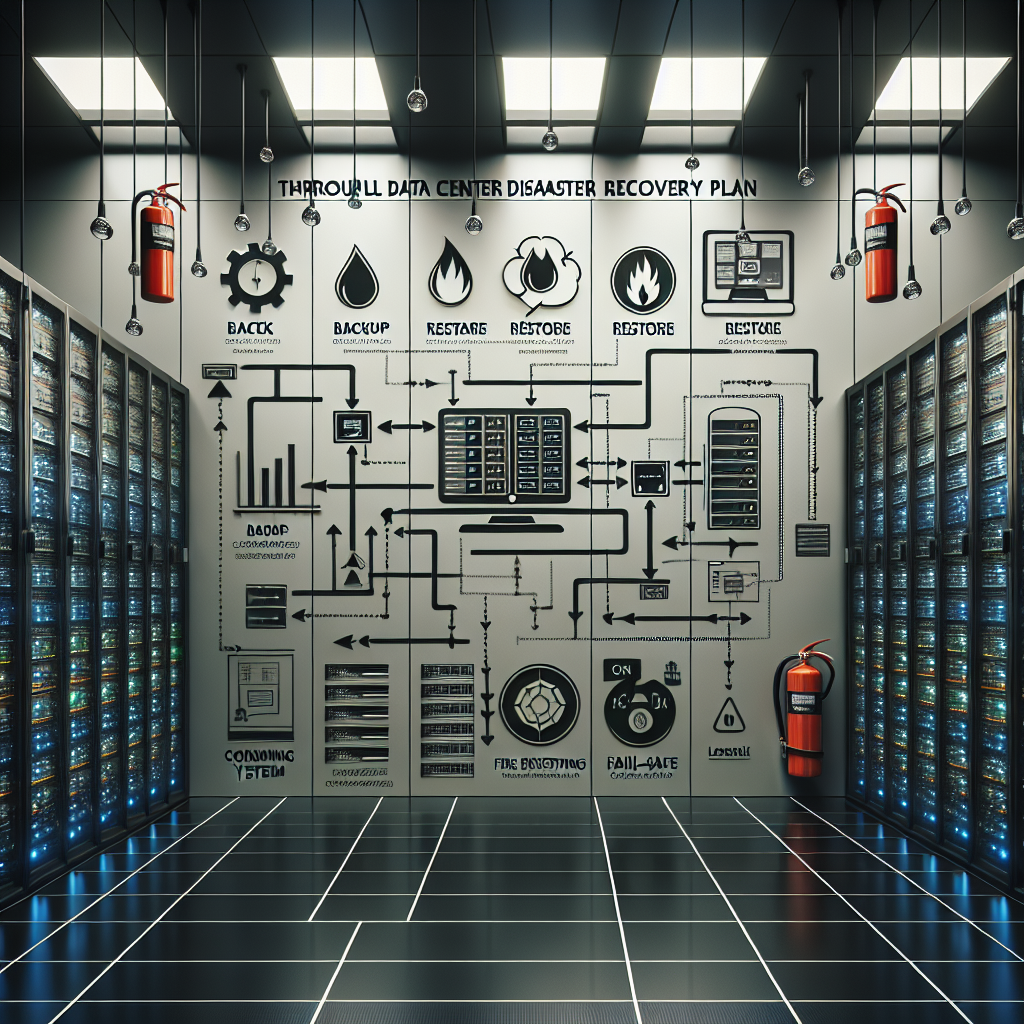In today’s digital age, data is one of the most valuable assets for businesses. From customer information to financial records, companies rely on their data to operate smoothly and efficiently. However, disasters can strike at any time, whether it be a natural disaster like a hurricane or a man-made disaster like a cyber attack. In order to protect their data and ensure business continuity, companies must have a comprehensive data center disaster recovery plan in place.
Developing a comprehensive data center disaster recovery plan involves several key steps. The first step is to assess the potential risks to your data center. This includes identifying potential threats such as natural disasters, power outages, cyber attacks, and hardware failures. By understanding the potential risks, you can better prepare for them and mitigate their impact on your data center.
Next, you need to determine your recovery objectives. This involves identifying the critical systems and data that need to be recovered in the event of a disaster. By prioritizing your recovery objectives, you can ensure that the most important systems and data are recovered first, minimizing downtime and ensuring business continuity.
Once you have identified the potential risks and recovery objectives, you can begin to develop a data center disaster recovery plan. This plan should include detailed procedures for responding to disasters, including how to recover data, restore systems, and communicate with employees and stakeholders. It should also include a backup and recovery strategy, outlining how data will be backed up and stored securely to ensure it can be quickly recovered in the event of a disaster.
In addition to developing a data center disaster recovery plan, it is also important to test and update the plan regularly. Testing the plan allows you to identify any gaps or weaknesses in your disaster recovery strategy and make adjustments as needed. Regularly updating the plan ensures that it remains current and reflective of any changes in your data center environment.
In conclusion, developing a comprehensive data center disaster recovery plan is essential for protecting your data and ensuring business continuity. By assessing potential risks, determining recovery objectives, and developing a detailed plan, you can better prepare for disasters and minimize their impact on your data center. Testing and updating the plan regularly will help ensure that it remains effective and up-to-date. Remember, when it comes to data center disaster recovery, it’s better to be prepared than to be caught off guard.


Leave a Reply